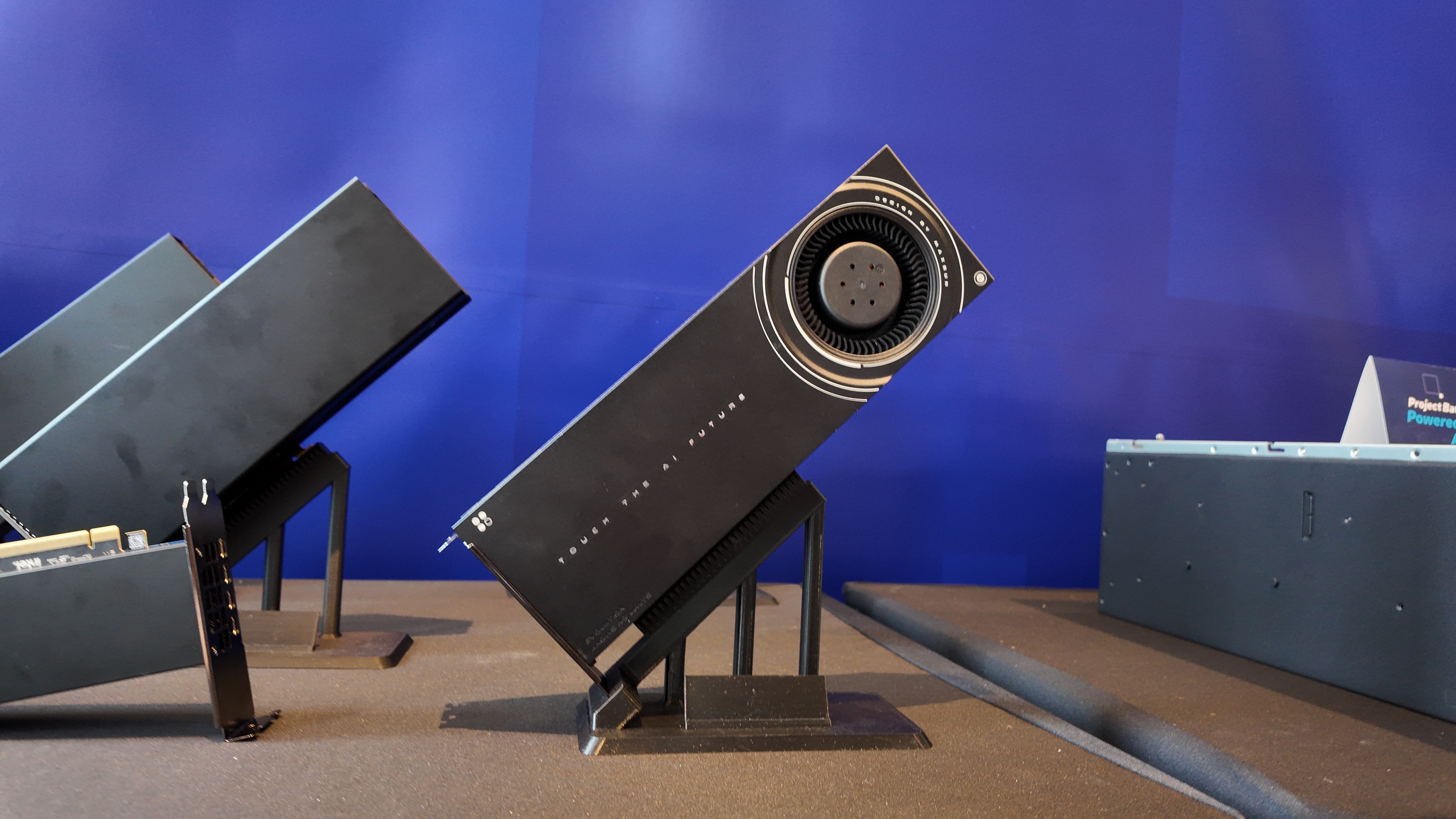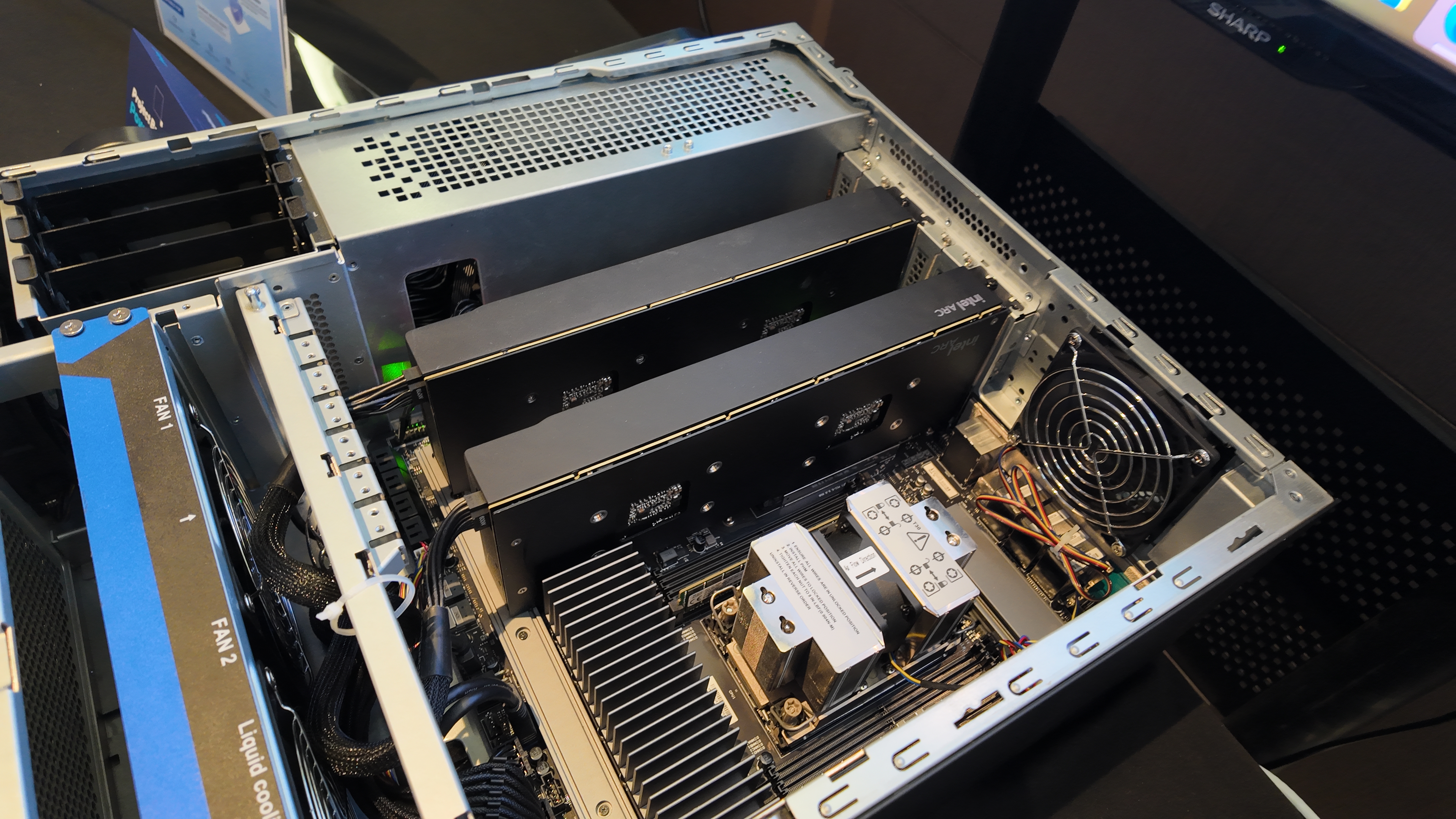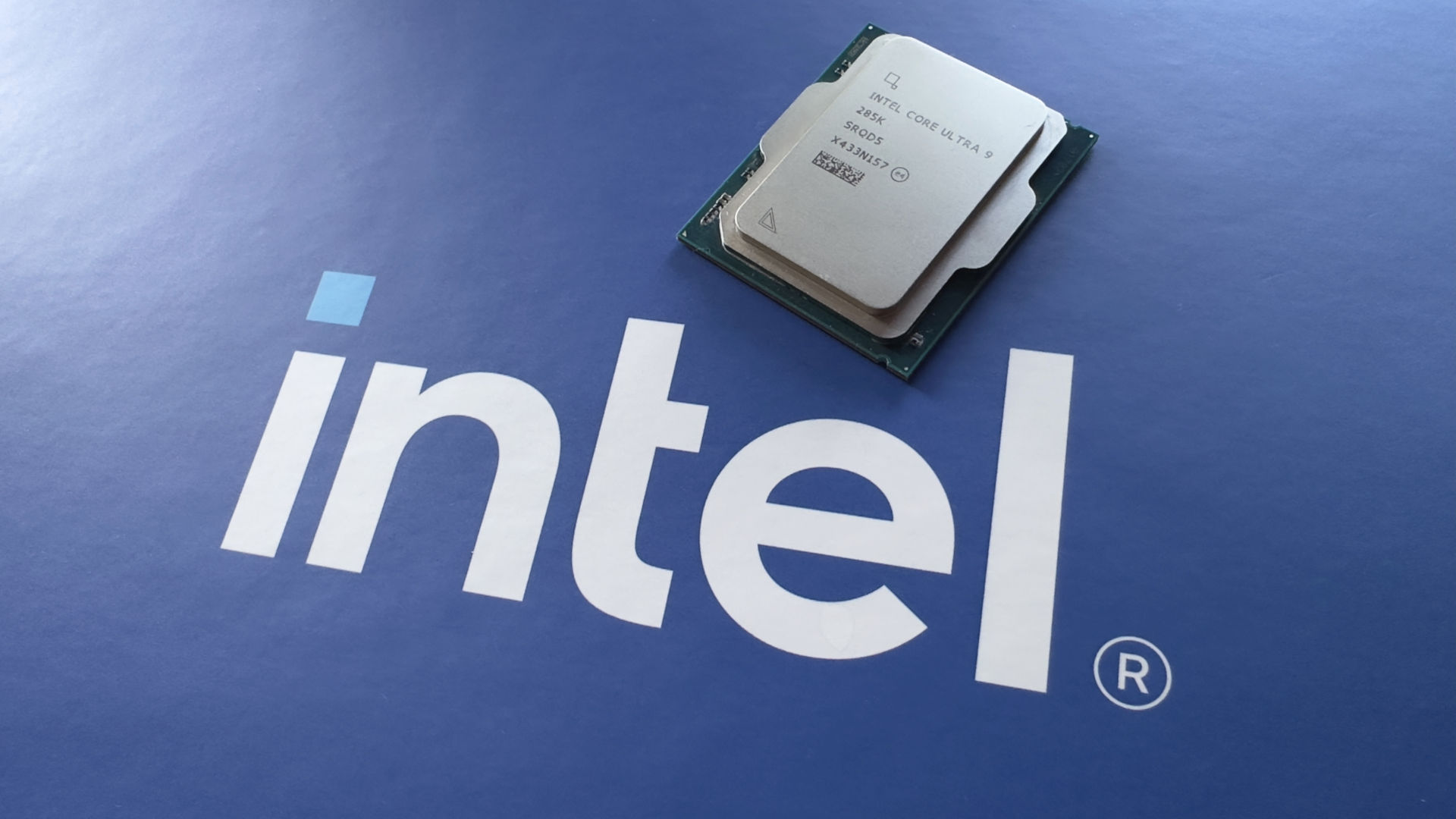
Dual-GPU cards might be dead for gaming but they're alive and well for AI inference.
Two GPUs on a single graphics card… now where have I heard this one before? Intel and its partner Maxsun have stuffed two of its new Arc Pro B60 chips onto a single GPU, and yes, it’s for AI.
If you’re a PC gamer of a certain age, you may remember a few choice graphics cards that were made up of, more or less, two graphics cards on a single PCB, like the AMD Radeon R9 295X2. These contained all the components required to run the chips practically independently of one another, using drivers to combine their power to render a game. These cards are long-extinct now, due to a lack of the necessary Crossfire/SLI support and companies favouring large single GPUs instead. This new Intel and Maxsun dual-GPU card is bringing this concept back, sort of.
The Maxsun dual-GPU card combines two Arc Pro B60 cards into a single relatively slim shroud. Slim considering it’s a dual-GPU card, anyways. It’s a bit of a beast for VRAM capacity, as each GPU has access to 24 GB of memory, making for 48 GB total per card. That’s 96 GB for a two-card system, which is exactly what Intel was showing off over at Computex 2025.
Intel showed off the Maxsun card in an inference machine, alongside a XEON CPU. It was running an AI model locally—these models are huge and easily swallow up most gaming card’s VRAM capacity—but what was more impressive was the fact it only had two physical cards in the system. It was sat alongside another system using four, and both shared 96 GB of RAM. Unfortunately I couldn’t peek the temps but I suspect those dual-GPU cards require decent cooling.
The Pro B60 is a new arrival into the workstation lineup for Intel, alongside the B50. It’s made up of a G21 GPU, the same found in the Arc B580, but with double the memory attached using the clamshell method also used on the RTX 5060 Ti 16 GB variant. That means 24 GB memory, 456 GB/s bandwidth, 20 Xe-cores, and a 120-200 W TBP.
Catch up with Computex 2025: We’re on the ground at Taiwan’s biggest tech show to see what Nvidia, AMD, Intel, Asus, Gigabyte, MSI and more have to show.
Oh and to run both GPUs over a single PCI slot, a x16 PCIe 5.0 connection is bifurcated into two x8 connections, which is ample enough bandwidth.
Speaking to Intel at Computex 2025, I can confirm there is no 24 GB variant planned for gamers. There’s just no real benefit for gamers with this configuration, I’m told. It’s only for AI, folks.
Will we ever see a return to dual-card configurations for gaming? Not unless someone figures out a way to have the two cards appear as one without a large amount of driver development work. That was the thorn in previous efforts with Crossfire and SLI, which saw AMD and Nvidia valiantly try to get dual-card systems working smoothly in many games and often still end up with shaky experience. All the major GPU companies would undoubtedly like to find the perfect, driver-free solution, but we’re not at a loss for performance with the largest individual GPUs around today and I doubt its development is high on the priorities list.








